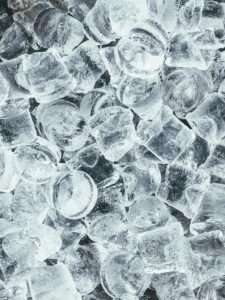 The history of medicine is filled with accounts of strange and often downright dangerous “treatments,” but these have sometimes opened the way for lifesaving discoveries. In this Curiosities of Medical History feature, we look at the unusual practice of exposing the body to cold temperatures for therapeutic purposes: therapeutic hypothermia.
The history of medicine is filled with accounts of strange and often downright dangerous “treatments,” but these have sometimes opened the way for lifesaving discoveries. In this Curiosities of Medical History feature, we look at the unusual practice of exposing the body to cold temperatures for therapeutic purposes: therapeutic hypothermia.
The term “hypothermia” appears to have first emerged in English-language texts in the late 19th century. It comes from the ancient Greek word for “hot” or “warm” — “thermós” — to which the Greek-derived prefix “hypo-,” meaning “under,” is added.
Nowadays, hypothermia is classed as a severe condition in which the body is unable to maintain its normal heat, and body temperature drops dangerously. Severe hypothermia can result in heart failure and death.
This dangerous medical condition has been understood as such for centuries, yet there is also another side to the history of hypothermia.
Therapeutic hypothermia — the cooling of the body for therapeutic purposes — is a medical practice that has been around, in one form or another, since ancient times.
Some of its uses have been controversial at best, but it has also given rise to legitimate modern-day treatments. In this Special Feature, we briefly outline the complex history of therapeutic hypothermia.
To understand more about the curious history of therapeutic hypothermia and the continued appeal of exposure to low temperature for medical purposes, we also spoke to Dr. Phil Jaekl, neuroscientist and science writer, whose upcoming book, Out Cold: A Chilling Descent into the Macabre, Controversial, Lifesaving History of Hypothermia, discusses these topics at length.
The use of cold in ancient medicine
Therapeutic hypothermia seems to have been practiced for over 5,000 years. Its first known mention was in the Edwin Smith Papyrus, a medical treatise outlining treatments for various injuries and ailments, a text that may date back to around 3,500 B.C.E.
“The earliest written records of using cold were discovered in ancient Egyptian texts,” Dr. Jaekl told Medical News Today. “Some experts think these texts are the first recordings of medical teachings from Imhotep, a polymath and advisor to the pharaoh Zoser. They suggest using local cold applications to treat skin irritations, likely for [enslaved people] or in military situations.”
For “an abscess with prominent head on the breast,” the papyrus prescribes “cool applications,” which in this case were ointments with cooling effects, made of ingredients such as fruit, mason’s mortar, and water.
According to Dr. Jaekl, “[t]hese texts are significant because they are some of the first to advocate systematic medical procedures rather than incantations or prayers, which were common at that time.” The Edwin Smith Papyrus is possibly one of the first medical “textbooks” laying out case studies of physical ailments and indicating dedicated treatments.
Some of the better known forefathers of medical science also wrote about cold temperatures and their dangers and therapeutic potential. “The next big advancement for using cold therapeutically didn’t happen until over 1,000 years had passed, when cold was incorporated into the humorist system of medicine,” Dr. Jaekl noted.
This system posited that in the human body, there circulate four “humors,” or liquids, which, when out of balance, would cause any number of diseases. To restore health, a physician would have to diagnose and address the humoral imbalance.
These humors, most often listed as black bile, yellow bile, phlegm, and blood, were either “hot” or “cold,” “wet” or “dry,” thus causing corresponding afflictions. Fever, as a “hot” disease, would have required exposure to an opposite element as a treatment.
Ancient Greek physician HippocratesTrusted Source (c. 460–370 B.C.E.) spoke of the dangers of exposure to cold at some length in his treatises. He pointed out that “cold causes fits, tetanus, gangrene, and feverish shivering fits [and it] is bad for the bones, teeth, nerves, brain, and the spinal cord.”
Yet he also recognized the therapeutic potential of cooling elements, as he prescribed using snow and iceTrusted Source to stop bleeding, and drinking cold water to bring down fever.
Galen (129–c. 210 C.E.), who was significantly influenced by Hippocrates, is credited with the invention of cold cream, which he prescribed not for skin care or the removal of makeup, as it later came to be used, but for cooling purposes in a medicinal context.
His cold cream may have been a mixture of olive oil, water, and beeswax.
“[The use of cold] was advocated by the pioneering Greek physicians Hippocrates and Galen to help balance bodily humors. In fact, Galen is known to have invented ‘cold cream,’ which is still popular today, although he advocated it for treating fever rather than as a moisturizer.”
– Dr. Phil Jaekl
The emergence of cold bathing
The method of cooling the body as a therapeutic intervention further expanded in the 17th century, when physicians such as John Floyer (1649–1734) started experimenting more widely with the use of hot and cold water in medicine.
In his treatise, An Enquiry into the Right Use and Abuses of the Hot, Cold, and Temperate Baths in England (1697), Floyer wrote at some length about the hygiene and medicinal benefits of cold water baths.
“In the hot Air of Summer, our Bodies are of less Strength; therefore in Summer it is necessary to concenter our Strength and Spirits by Cold bathing,” Floyer wrote, later adding:
“I do not persuade my Reader to change those Errors of living, without having first done so my self; for by leaving off strong Liquors, and all hot Diet, Teas, Coffee, &c. and by Water-drink∣ing, and bathing at Buxton [a historic spa town in England – Ed.], I have procured to my self better Health, and more Hardiness, than I have enjoy’d for many Years before.”
He calls this a “cold regimen.”
At this time in history, Dr. Jaekl told MNT, “[b]esides simply using it to cool off, a big breakthrough for cold water was actually to use it for personal hygiene, like in Bath in England [another historical spa town – Ed.], for example, where people were, well, ‘bath-ing’.”
“Next, in the 18th century, it was used to treat fevers before it became popularized among the 19th-century European aristocracy as beneficial for aches and pains and general well-being. Around that time, spas became the in-thing,” he noted.
Scottish physician William Cullen (1710–1790) promoted cold “shower baths” and sometimes cold water enemas for therapeutic purposes, which could be prescribed for a vast array of conditions.
Cullen argued that cold can act as a sedative as well as a stimulant, particularly for the blood flow, and noted that drinking cold water in moderation could help fight fevers, although he also specified that some forms of exposure to cold temperatures can induce a fever.
However, he also suggested that cold bathing could prevent “contagion,” as well as “a flaccidity of the system” in young women “at a certain period of life.”
In the 19th century, Austrian Vincenz Priessnitz (1799–1851) started a “trend” of cold bathing as an alternative medicine practice. One of his contemporary admirers, Charles Schieferdecker, described Priessnitz’s method of treating fevers in the following manner:
“The patient laboring under this fever is put, […] whilst in the state of the utmost heat and the most raging paroxysm, into a bath as cold as possible, and left therein until he is cooled to the very chattering of the teeth.”
Written by Maria Cohut, Ph.D. on May 11, 2021
www.medicalnewstoday.com



